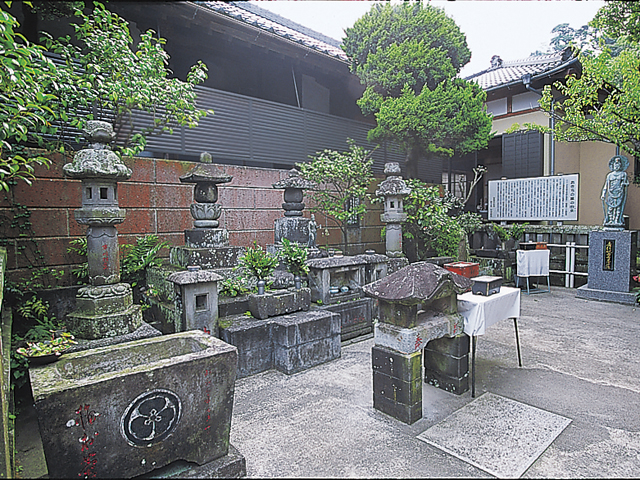
Bodhi Temple of Okichi. On the right side of the main hall, there is the Karin Okichi Memorial Hall (charge: 400 yen, time: 8 to 17 o'clock, day off: no holiday), which displays Okichi's remains and photographs. The tomb stands at the back of the memorial hall, alongside the stone lanterns and mounds of Tsurumatsu. The tombstones and lanterns were donated by Yaeko Mizutani, the predecessor of the new school, who performed "Tojin Okichi" on the stage. Also left within the museum is the "Ryami no no Kama" meeting with Katsuma Kaishu and Yamauchi Yondō over the absolution of Sakamoto Ryoma to escape the clan in Bunkyu 3 (1863).
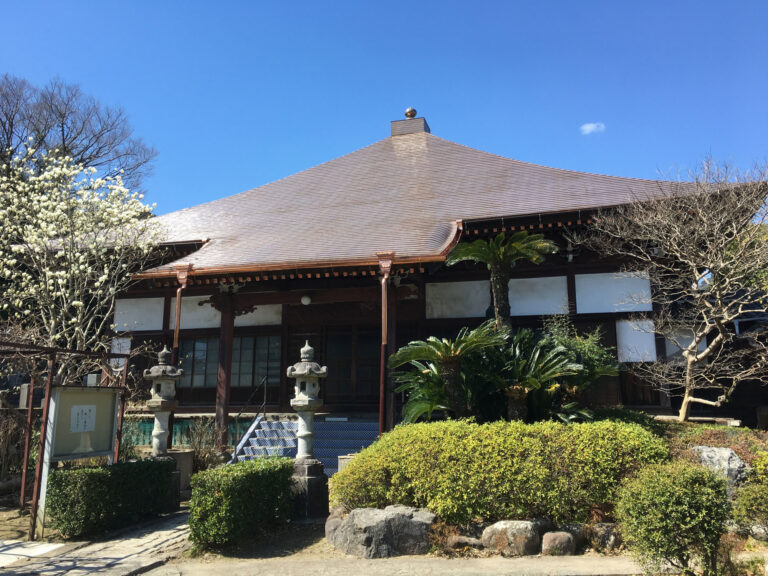
An ancient temple of the Jodo sect founded during the Muromachi period. There is a wisteria shelf in the precincts, and light purple flowers are beautiful in early summer. In addition, Tsunamizuka stands to mourn the victims of the great tsunami of the first year of Ansei (1854). In Amida-do, a sitting statue of Amida Buddha of Joroku in the late Heian period is enshrined. It is also famous for the tomb of Tsurumatsu, a carpenter who was Okichi's lover.
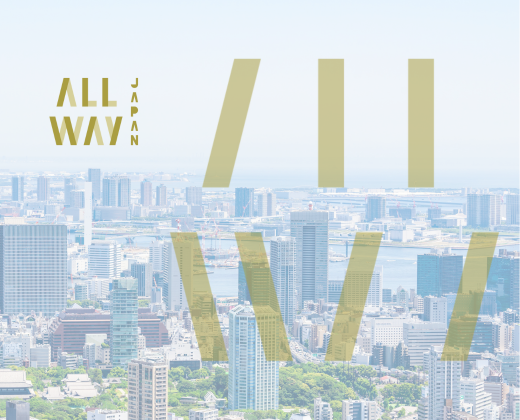
The temple where American envoy Townsend Harris placed Japan's first American consul-general. Harris spent two years and ten months in the main hall here from September 1856. Harris's remains and records of the time are displayed at the Harris Memorial Hall (fee: 500 yen, time: 8-17 o'clock, no leave) in the precinct. There is also a monument commemorating the first time milk was drunk in Japan, and a butchery tree [togyumoku] offering tower indicating that it is the first butchery site, and the cemetery contains the graves of the crew of the black ship Perry fleet and the Russian ship Diana. National Historic Site.
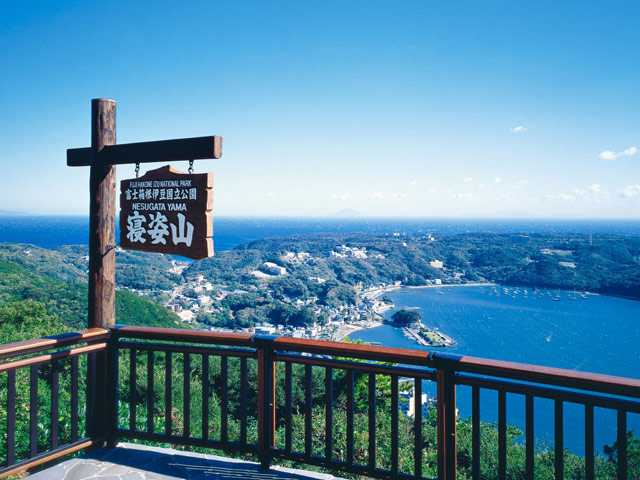
Located east of Izukyu Shimoda Station. The name is because the mountain line resembles a woman's sleeping figure. Three minutes by ropeway to the summit. The mountaintop is an garden with many cherry blossoms and other trees, overlooking Shimoda city and port. The Aizendo, which ends when you climb further, is known for its curbs.
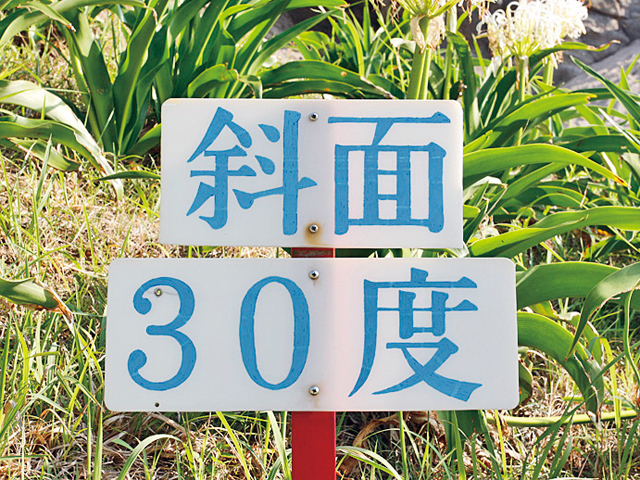
A ski area made of sand, adjacent to the Tabu swimming beach. On a slope where sand is blown up by the wind from the sea, you can enjoy sand skiing on a sleigh. The slope is 100m wide and 45m long. With a maximum slope of 30 degrees, it is quite powerful when standing at the top. Soli is rented out at a nearby bed house. Soli lending 300 yen a day.
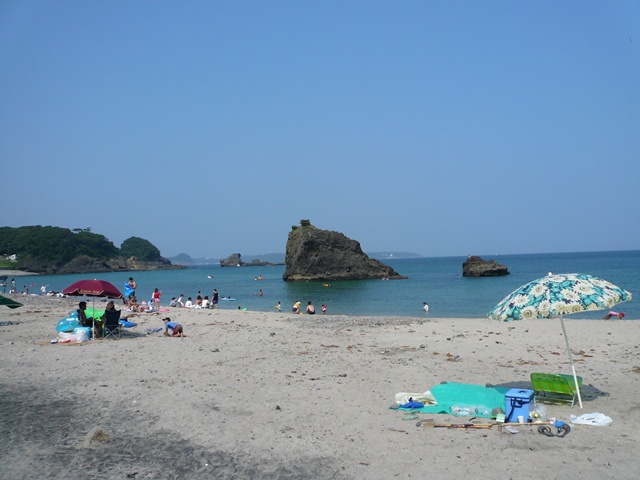
As well as sea bathing and rock play, it is also adjacent to the sand ski slopes, which make use of the complex coastal topography. The unusual Ryonggong Grottoes are mysterious and entertaining for tourists.
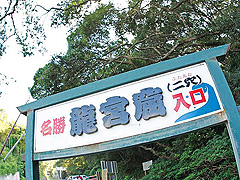
Down the stone steps full of wildness, you can see the Dragon Palace (two holes), a cave created by the erosion of the waves, and from the gaping ceiling hole, a pleasant sunstroke falls on a good day; due to the stone fall, part of the cave is not allowed to enter.
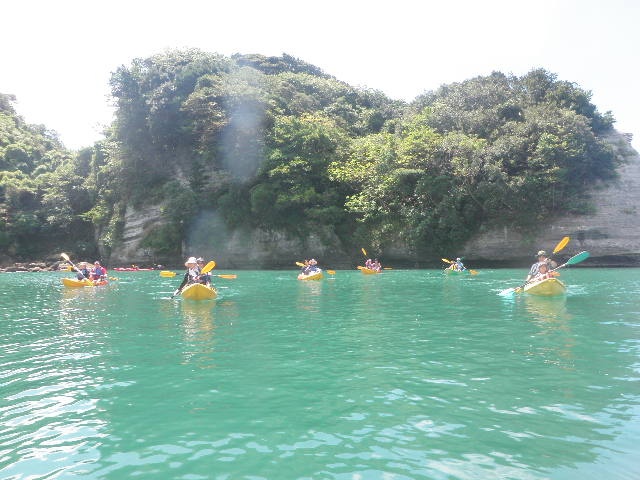
An experience spot where you can enjoy the real pleasure of sea kayaking in the field of the sea of Minami Izu. One of the attractions is that you can freely choose the course area according to the direction of the wind and the wave conditions of the day from Tsuzukizaki to Nishi-Izu on the east side. Together with the instructor to the cave and the offshore, let's enjoy the sea with a different eye line.
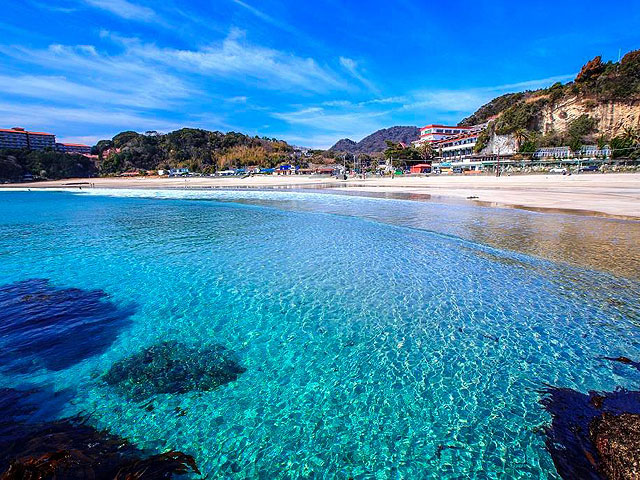
As a beautiful 450m white sand beach, it is especially famous among people who play surfing and marine sports. It has received a wide range of support from bodyboard beginners to veteran surfers, and national competitions for surfing are also being held. In addition, facilities such as hot water showers are available throughout the year.
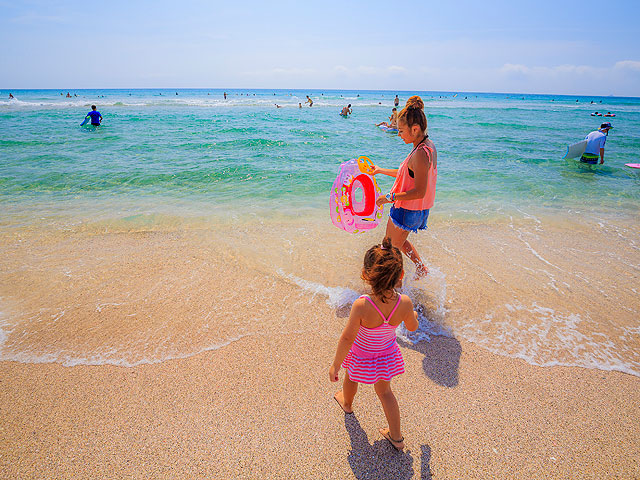
It is a majestic beach of 770m on the Kumai line. It is a popular swimming beach along with Iridahama and Tatatohama in the summer. The white sand beach and transparent sea attract many people, and there are many foreign visitors coming by word of mouth.











